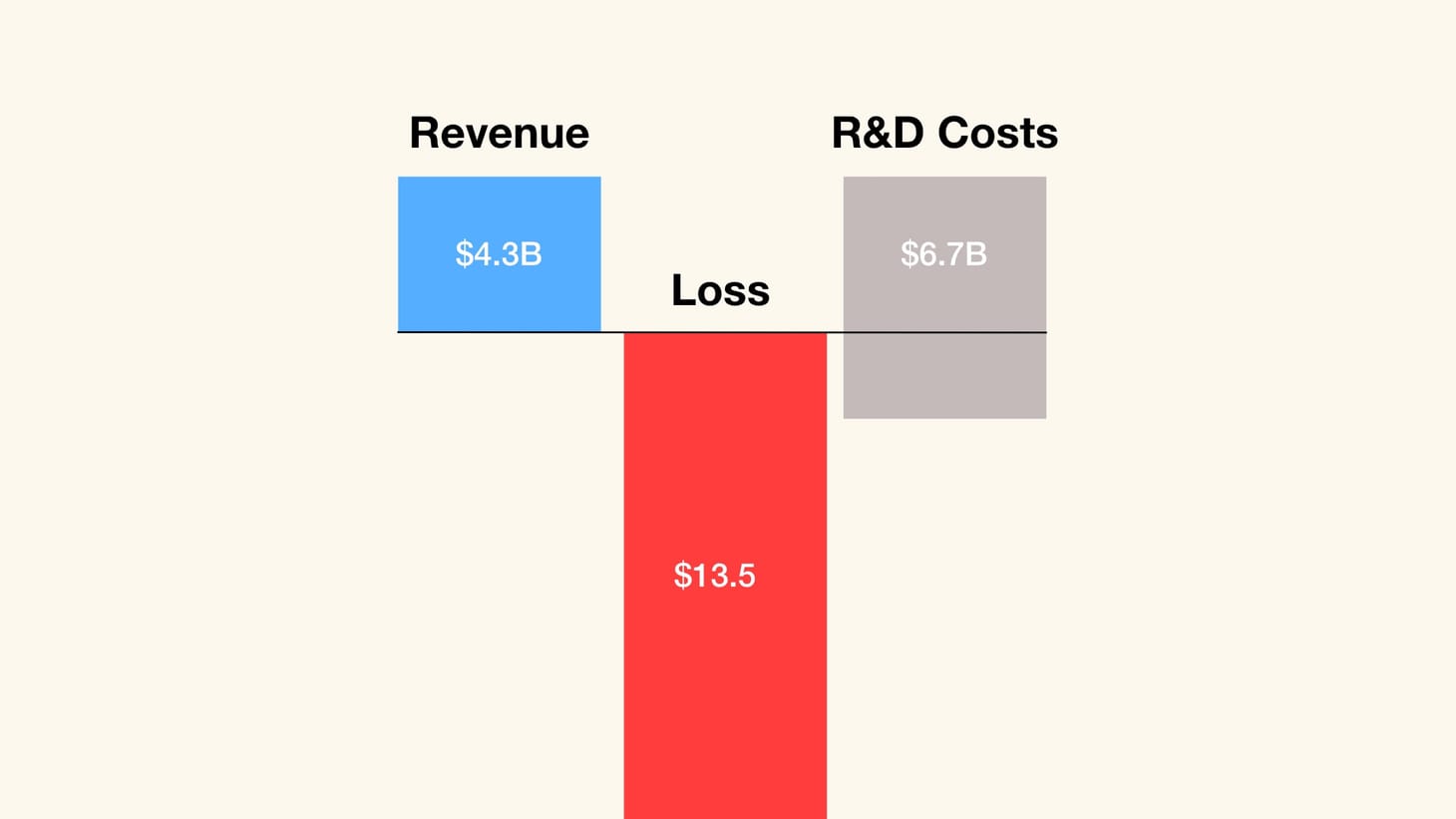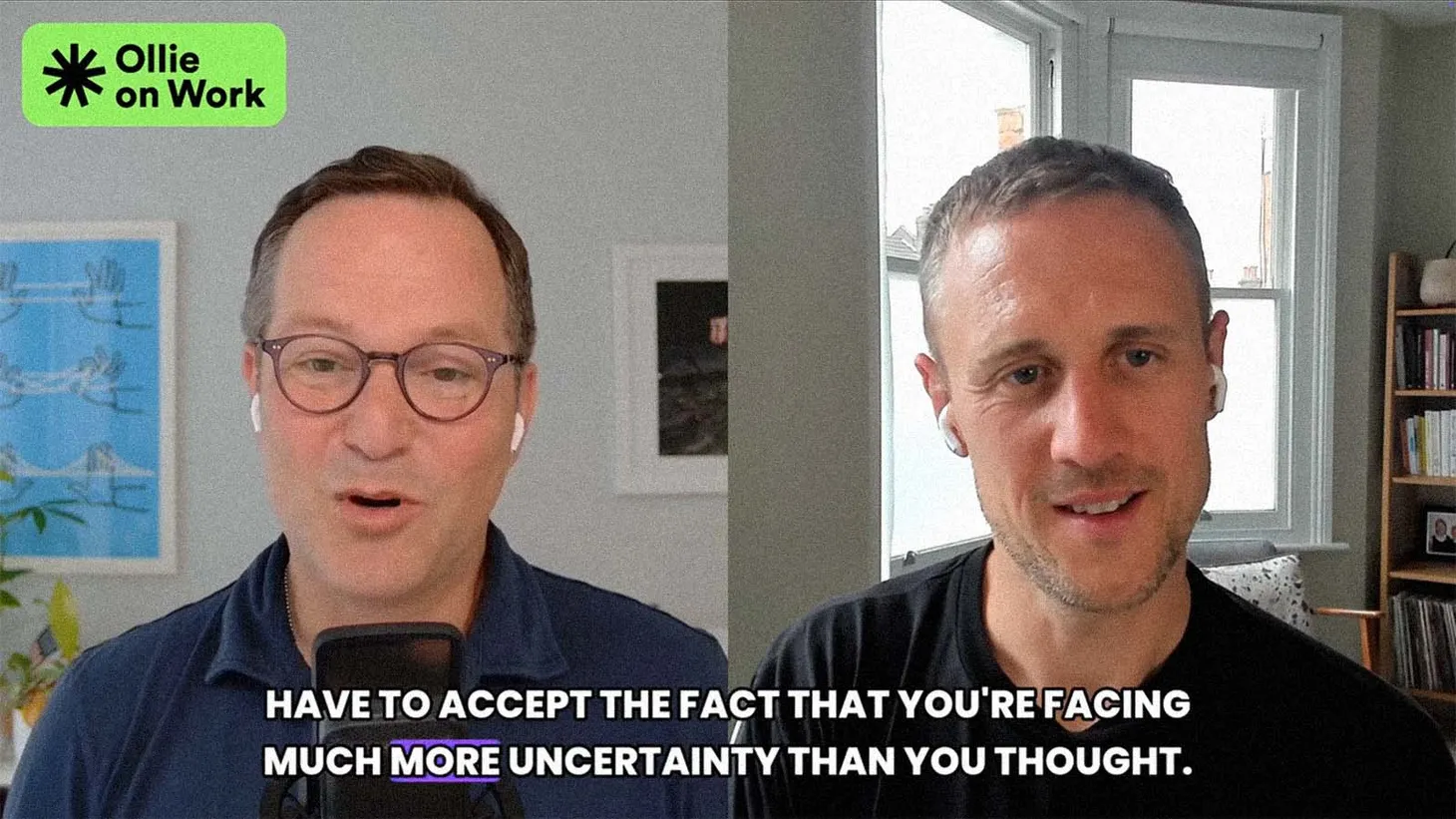Is OpenAI the New WeWork?
The AI company is probably worse, but possibly much better.

"You're not crazy enough." The investor Masayoshi Son famously encouraged Adam Neumann to think bigger and crazier about his plans for WeWork. We all know how that ended: WeWork expanded aggressively, its valuation continued to inflate, until the whole thing collapsed once the company sought to go public and investors got a glimpse of the company's inner workings.
Investors were spooked by the fact that Neumann invested millions in a variety of unrelated businesses, leased his own properties to the company, and even charged WeWork a fee for using the name "We." But the core concern was about the economics of WeWork's core business: The mismatch between the long leases it "bought" and the short-term leases it "sold."
Users loved WeWork's product, showing clear demand for a whole new way to work. But while sales were growing, spending grew even faster. Neumann tried to explain that at some point in the future, WeWork's dominant position would enable it to reduce spending and become profitable.
OpenAI's Sam Altman is telling a similar story now. Users love ChatGPT, and its user base has grown from zero to more than 700 million within less than two years. And OpenAI's revenue has been exploding, but so have its costs. As The Information reports, the company generated $4.3 billion in sales during the first half of 2025, but it spent $6.7 billion on research & development. In total, OpenAI lost $13.5 billion during the period.
Is this a terrible business or what?
It is now. But just like Neumann's WeWork, OpenAI hopes that at some point in the future, it could start ramping down costs relative to revenue.
So, OpenAI is basically the new WeWork?
There is one key difference, which makes OpenAI probably worse but also possibly much better. The difference is in the nature of each company's upfront costs. WeWork spent billions on leases and decoration in the hope that its spaces would generate revenue for many years. OpenAI is spending billions on developing AI models in the hope that these models would generate revenue for many years.
In WeWork's case, there were concerns about how frequently WeWork would have to refurbish its spaces to keep up with customer preferences. The company's fashionable interiors were more desirable, but also more likely to age faster.
OpenAI has the same problem, but on steroids. New AI models go out of fashion almost as soon as they are released. ChatGPT-3.5 was earth-shattering when it came out in 2022, but within months, several other companies were offering models that were equally compelling. Today, the pace of innovation and intensity of competition is even more intense. Companies like Google, Anthropic, Meta, Alibaba, and DeepSeek constantly one-up each other, introducing better capabilities at lower costs.
In theory, WeWork could corner the market for flexible space by securing the best locations in the best cities. But this possibility is not open to OpenAI: Users can switch from ChatGPT to Claude much more easily than customers could switch from WeWork to a traditional lease (or a Starbucks table). OpenAI claims that the ChatGPT brand is powerful. It's true: ChatGPT has become synonymous with AI. But the same was true for WeWork. In fact, even today, more people search for "WeWork" than for "coworking". But being top of mind did not prevent WeWork's valuation from crashing from $47 billion to bankruptcy.
OpenAI faces much more formidable competition than WeWork ever did. And the value of its investments decays faster than those previous made by WeWork. The company would need a miracle to justify its current valuation of nearly $500 billion.
The good news is that OpenAI might actually produce a miracle. Research and development is different from real estate leases and construction costs. It might produce a breakthrough that would dramatically change the cost structure of all software (and all industries that rely on software). WeWork's expenses never had the potential to change the basic cost structure of land and construction. But OpenAI's expenses do have the potential to do that for many other industries.
How likely is that miracle? Like all miracles, not very likely. And even if it does happen, it might happen at Google or Anthropic or in China. Still, a miracle at OpenAI is possible, and that possibility is enough for some investors to continue to pour money into the company.
So: Is OpenAI the new WeWork? No, it is currently much worse. But it has a slight but meaningful possibility of being a much better investment.
Would I invest in it?
At a $500 billion valuation, the upside seems too limited to make it exciting enough. Even if it does tremendously well and becomes a $10 trillion company, a 20X reward is not sufficient to justify the risk.
So why are big investors still pouring in?
- They have fewer options than I do. Deploying $50 billion is much harder than deploying $1 million. And at that check size, there are very few investments that offer even the possibility of going 20X.
- They have other interests that benefit from the growth of OpenAI, such as energy or semiconductor investments.
- They feel it is early enough in the cycle and that they would be able to sell their shares (or borrow against them) at a higher valuation before the whole thing collapses.
Would you invest?
Have a great week.
Best,

🎤 How will AI reshape our cities, companies, and careers? My speaking schedule for the year is filling up. Visit my speaker profile and get in touch to learn more.

Click here to book a keynote or learn more.
Old/New by Dror Poleg Newsletter
Join the newsletter to receive the latest updates in your inbox.




